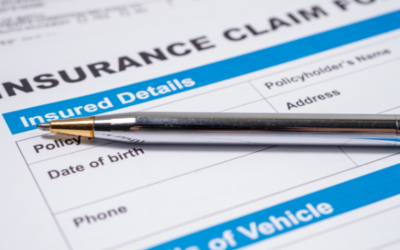In the dynamic landscape of India's job market, uncertainties loom large, with factors like economic fluctuations, technological advancements, and...

How to Pick the Right Credit Card
How to Pick the Right Credit Card
Credit cards are super useful in India, giving you an easy way to pay for things, flexibility, and some cool perks. But with so many credit cards out there, it’s hard to pick the right one for you. This guide will help you choose the best credit card in India, considering what you need and what’s smart for your wallet.
Subas Tiwari
Why Credit Cards are Big in India
In India, people love credit cards. They used to be fancy, but now they’re smart financial tools. Credit cards let you buy stuff, pay bills, and get money when you need it. Plus, they give you rewards, cashback, and discounts – what’s not to love?
Why Picking the Right Card is Key
Choosing the right credit card is a big deal because it affects your money big time. A good credit card can save you cash, protect you when things go wrong, and build your credit score. But a bad choice means you pay extra fees and get stressed out.
India’s credit card world is a big place, and there’s no one-size-fits-all answer. The best credit card for you depends on your needs, money goals, and how you spend. Let’s break it down and make the right choice.
Understand Your Money Goals and Spending Habits
First, know your financial story. What do you want from a credit card? Here are some common goals:
- Building Credit: If you’re new to credit or need a better credit score, go for a card that helps with that.
- Earning Rewards: If you want freebies like cashback, rewards points, or air miles, go for a card with a sweet rewards program.
- Managing Expenses: If you’re using a credit card for everyday stuff, get one with low interest or a grace period.
- Travel and Lifestyle: If you’re a globetrotter or want cool stuff like airport lounge access, look into travel or lifestyle credit cards.
- Building or Fixing Credit: If your credit history isn’t great, try secured or credit-builder cards. They’re designed for folks like you.
Think about your spending habits, too
- Categories: What do you spend most on? Groceries, eating out, travel, shopping, fuel, or fun stuff?
- How much and how often: Do you use your credit card a lot or just now and then? Do you pay the full bill every month?
- Your budget: What’s your monthly budget, and can you stick to it with a credit card?
Know Your Card Needs
Now that you’re clear on your goals and spending style, it’s time to nail down your credit card needs. Here are some scenarios:
Rewards Lover: If you want rewards, go for cards that give the most in the categories you spend most on. For instance, if you love eating out, find a card with dining rewards.
Interest Saver: If you want to avoid high interest, find cards with low Annual Percentage Rates (APR) and easy interest rules.
Frequent Flyer: If you travel a lot or like VIP stuff, prioritize travel cards that offer air miles, hotel deals, and travel insurance. They often come with neat perks like airport lounge access.
Credit Builder: If you’re building or fixing your credit, look into secured or credit-builder cards. They’re perfect for people with a slim or damaged credit history.
Knowing your goals and spending habits is the first step in finding the right credit card. Armed with this info, you can compare your options and pick smartly.
Get the Lowdown on Your Credit Score
Your credit score is like your financial report card. It shows lenders how responsible you are with money. In India, credit scores come from folks like CIBIL, Experian, Equifax, and CRIF High Mark. These scores depend on your credit history, like your accounts, how you repay debts, and what you owe.
Before you apply for a credit card, you got to know your credit score. Here’s how:
- Online Credit Bureaus: Check out websites like CIBIL, Experian, Equifax, or CRIF High Mark. They let you request your score by filling out some personal info.
- Credit Monitoring Services: Some banks and credit card companies offer credit monitoring services. These give you easy access to your score.
- Credit Score Apps: Loads of apps let you check your score. They even toss in regular updates and credit monitoring.
Why Your Credit Score Matters
A good credit score is key for a bunch of money stuff. Here’s why:
- Credit Approval: Lenders and credit card companies peek at your credit score to see if you’re good with money. Higher scores mean a better chance of getting credit cards and loans.
- Lower Interest Rates: A top-notch score lands you credit cards and loans with low interest. This saves you lots of money in interest over time.
- Higher Credit Limits: A sweet score can get you higher credit limits on your cards, giving you more financial elbow room.
- Haggling Power: A solid credit score lets you bargain with lenders. You can ask for better rates and terms based on your financial track record.
- Renting Homes: Landlords check your credit score to decide if they should rent you a place. A good score makes this easier.
Before you dive into the world of credit cards, take a sec to check your credit score. Knowing where you stand helps you figure out what cards you’ll qualify for and what terms to expect.
Compare Types of Credit Cards
Credit cards in India come in all shapes and sizes, each designed for specific needs and lifestyles. Understanding the types helps you narrow down your choices. Here’s a quick look at the common types:
- Travel Credit Cards: These are for jet-setters. They give you air miles, hotel discounts, airport lounge access, and travel insurance. Perfect if you want to max out your rewards on trips.
- Rewards Credit Cards: These cards hand out rewards like points, cashback, or discounts on different spending categories. You earn points for every rupee you spend. They’re great for everyday spending.
- Lifestyle Credit Cards: If you want to spice up your life, go for these. They offer discounts and goodies for things like dining, shopping, entertainment, and fitness.
- Fuel Credit Cards: Tailored for frequent fuel consumers, these options provide benefits such as fuel surcharge waivers or cashback on refuelling expenses—an ideal way to cut down on your fuel costs.
- Secured Credit Cards: Geared towards individuals with limited or no credit history, these options require a deposit matching your credit limit. Using them wisely aids in establishing or rebuilding your credit score.
- Business Credit Cards: Entrepreneurs and business owners, these are for you. They offer biz perks like expense tracking, employee cards, and business rewards. You can also get higher credit limits to meet your business needs.
Consider your lifestyle, spending habits, and personal preferences when evaluating credit card options. The ideal choice aligns with your goals and maximizes value. Certain cards even combine features from various types, offering a versatile mix of benefits to suit your needs.
Master the Art of Fees and Charges
Before you lock in your credit card choice, you got know about the different fees and charges. They can jack up the cost of using your card. Here’s what to watch out for:
- Annual Fees: Every year, you’ll pay a fee for having and using the card. It can be zero (no annual fee) or a few grand. You might get a break in the first year, but it kicks in from year two. Think about whether the fee’s worth the card’s rewards.
- Interest Rates: This is the cost of borrowing money with your card, and it’s called the Annual Percentage Rate (APR). It’s slapped on any balances you don’t pay off in full by the due date. Different card actions, like purchases, cash advances, or balance transfers, can have different rates.
- Late Payment Fees: If you don’t at least pay the minimum amount by the due date, you’re in for a charge. It can be pretty hefty and mess up your credit score.
- Cash Advance Fees: Grabbing cash from your credit card at an ATM or somewhere else means you pay a fee. It’s a chunk of the cash advance amount and comes with a higher interest rate.
- Foreign Transaction Fees: Buying stuff in foreign currencies or outside India racks up foreign transaction fees. These can add up if you travel a lot or shop from overseas websites.
Know the details of these fees and charges when you’re thinking about your credit card. The right card for you has a fee setup that matches your spending and helps you keep costs down.
Find Extra Benefits
Beyond the basics of rewards and fees, credit cards throw in extra benefits and perks. They can make your card awesome. Depending on what you like and how you live, some extras might catch your eye more than others:
- Travel Perks: Lots of cards, especially the travel ones, come with cool travel stuff. This could be air miles that you can turn into free flights or hotel discounts, airport lounge access for a comfy pre-flight experience, and travel insurance. Also, some cards give good exchange rates for international travel and spending.
- Concierge Services: Fancy credit cards often offer concierge services. These pros help with things like travel plans, restaurant bookings, event tickets, and more. They save you time and up your lifestyle.
- Purchase Protection: A few cards have your back when you’re unhappy with things you bought using the card. You can get stuff like extended warranties, price protection, and cover for damaged or stolen things.
- EMI Conversion Options: Some cards let you turn big buys into Equated Monthly Instalments (EMIs) with lower interest rates. It’s a great way to spread out big expenses.
- Balance Transfer Offers: If you’ve got high-interest credit card debt, some cards offer balance transfer options. This lets you move your debt to a new card with a lower interest rate for a set time.
When you’re looking at extra benefits, think about what fits with your lifestyle and spending habits. If you’re a frequent traveller, things like air miles and lounge access might be a hit. But if you make big buys, purchase protection and EMI options might be more your thing.
Check for Signup Bonuses and Introductory Offers
In India, credit cards often tempt newbies with juicy signup bonuses and introductory deals. These goodies give you a sweet reward or save you cash right off the bat. Here’s the deal:
Signup Bonuses: These are gifts for new cardholders who spend a certain amount in a set time. It can be cashback, rewards points, or vouchers for shopping or services. When you’re checking out signup bonuses:
- Look at the requirements to score the bonus.
- Check how much the bonus is worth and if it lines up with your spending.
- Mind the time frame to hit the spending target.
Introductory APR Offers: Certain cards offer an attractive initial deal with low or 0% interest rates on purchases or balance transfers, typically spanning a few months to over a year. Consider how you can leverage these offers based on your financial goals. Be mindful of when the introductory period concludes and the subsequent regular APR. While signup bonuses and initial offers may be enticing, ensure the card’s long-term benefits and terms align with your needs. Opt for a card that provides ongoing value beyond the initial promotional period.
Dive into the Terms and Conditions
Before you say yes to a credit card, take a good look at the terms and conditions that come with it. This is the fine print that lays out the rules for using the card. You got know stuff like:
- Interest Rates: Check out the interest rate terms, including the APR for different card actions. Understand how interest is calculated, and keep an eye out for variable interest rates that can change.
- Minimum Payments: Know the rules for the minimum payment. This is the least amount you got pay each month to keep your card in good standing. But keep in mind that paying just the minimum will cost you more in interest and take longer to pay off your balance.
- Grace Periods: Credit cards usually give you a grace period to pay your balance in full without racking up interest. Know how long the grace period is and when it starts and ends. Pay your balance in full within this period to dodge interest.
- Rewards Redemption Rules: If you’re going for a rewards card, understand the rules for cashback or rewards points. Know how and where you can use your rewards, and check for any limits or expiration dates.
- Restrictions and Limits: Search for any restrictions or limits imposed by the card issuer, such as blocking balance transfers, restricting cash advances, or adding fees for foreign transactions. Familiarizing yourself with these rules helps you avoid fees and potential complications.
Reading the terms and conditions is a big deal. It tells you what you can and can’t do with your card and what you’re on the hook for as a cardholder. It’s your ticket to a smooth credit card ride
Seek Advice and Read Reviews
When you’re almost ready to pick a credit card, it’s smart to ask for advice and check out reviews. Hearing from other folks who’ve used the card can give you the lowdown that you can’t get from the card’s official info.
- Ask for Recommendations: Talk to friends, family, or co-workers who’ve got credit cards. They can share real-life experiences on the pros and cons of their cards. You might get the scoop on how they’ve used the card and if it’s been a win for them.
- Read Credit Card Reviews: Plenty of financial websites and publications lay out credit card reviews and comparisons. These reviews give the lowdown on the card’s features, rewards, fees, and what users have to say. Look for reviews from sources you trust to grab unbiased info.
Nonetheless, remember, what works for one person might not be good for another. Use recommendations and reviews to get more information in your search for the perfect credit card.
Apply for the Card
So, you’ve done your research, weighed the options, and found the credit card that’s your perfect match. Now it’s time to actually apply for it. Here’s what to know about the application process:
How to Apply: In India, most credit card issuers let you apply online. Check out the issuer’s website to find the application form. The general steps look like this:
- Pick Your Card: Choose the exact credit card you want based on your research.
- Personal Info: Fill in the application form with your deets, like your name, address, birthdate, and contact info.
- Docs: Gather up the paperwork they want, which might be ID proof, address proof, income proof, and recent passport-sized photos. The exact documents can vary from issuer to issuer.
- Eligibility: Make sure you hit the eligibility targets the issuer sets, like age, income levels, and credit score.
- Submit Your App: Go over your application to check it’s all right, and then click to send it in.
- Docs You Might Need: Common documents include your passport, Aadhaar card, PAN card, voter ID, driver’s license (for ID), recent utility bills, a rental agreement, or your Aadhaar card (for address proof), salary slips, bank statements, or income tax returns (for income proof), and new passport-sized pics for ID checks. And even though it’s not a paper, your credit score might be looked at when you’re applying.
- Credit Card Approval and Activation: After you throw in your application, the issuer will give it an once-over. It can take anywhere from a few days to a few weeks to get your answer. Once they give you the green light, you usually get an email, SMS, or snail mail notice.
You’ll also get your credit card in the post, along with a Personal Identification Number (PIN). You need to activate your card the way they tell you to. It could be a toll-free number to call, a website to visit, or a mobile app to use. Once that’s done, you’re all set to start swiping your card for buys and transactions as the card’s terms say.
Use Your Credit Wisely
Choosing the best credit card is the first step in your financial journey. But it’s just the start. You also use your credit responsibly to get the most out of your card and keep your finances on track. Here’s how:
Smart Credit Card Moves
- Pay on Time: Always make at least the minimum payment on your credit card bill by the due date. That way, you dodge late payment fees and bad marks on your credit score.
- Pay in Full: Whenever you can, pay your card balance in full every month. That way, you don’t pay interest on what you carry over.
- Stay in Budget: Stick to your budget and don’t use your credit card for stuff you can’t pay off in the billing cycle.
- Check Your Statements: Look over your credit card statements often. Make sure they’re right, there aren’t any mystery charges, and you’re not overspending.
- Set up Alerts: Lots of credit card issuers let you get emails or texts with updates on due dates, low balances, and big transactions. Sign up for these to stay in the loop.
Budgeting and Tracking
- Make a Budget: Set up a budget every month to cover your income and costs, like credit card payments. This helps you keep your finances in line.
- Watch your Spending: Use tools like mobile apps or budgeting software to track your spending. They show where you can save.
- Emergency Cash: Make an emergency cash stash to cover surprise costs. This way, you don’t need your credit card when stuff happens.
Paying On Time
- Automatic Payments: Set up automatic payments for your credit card bill. It’s like insurance that you’ll never miss a due date.
- Paying Options: Most credit cards let you pay through different ways, like online banking, mobile apps, or with a check. Pick the one that suits you best.
Credit Score Check
- Credit Report Look: Check out your credit report often to make sure it’s right and there aren’t any signs of identity theft or fraud.
- Credit Score Watch: Think about using credit score monitoring services or apps that give you regular score updates.
Avoid Credit Card Traps
- High-Interest Debt: Be careful about piling up high-interest credit card debt. Avoid using your card for cash advances, and be aware of the interest rates.
- Responsible Balance Transfers: If you use balance transfer offers, have a clear plan to pay off the moved balance within the deal time.
- Skip Minimum Payments: Pay more than the minimum amount due when you can. It cuts interest charges and gets your balance down quicker.
By using your credit wisely, you get all the goodies from your credit card, keep a solid credit score, and dodge money problems. Finally, remember that choosing the right credit card is all about fitting your financial goals and lifestyle. It’s like a magic wand that makes your money life more awesome. So take your time, do your research, and choose a card that works best for you. When you use it right, your credit card is a big boost for your finances.
For personalized recommendations or to compare specific credit cards, you can visit the websites of major banks and credit card companies in India or consult a financial advisor.
Related
Job Loss Insurance Cover in India: An In-depth Exploration
Supply Chain Finance (SCF) by Banks in India
In the intricate realm of business operations, Supply Chain Finance (SCF) has emerged as a pivotal financial instrument, fostering collaboration,...
How to Pick the Right Credit Card
Credit cards are super useful in India, giving you an easy way to pay for things, flexibility, and some cool perks. But with so many credit cards...









